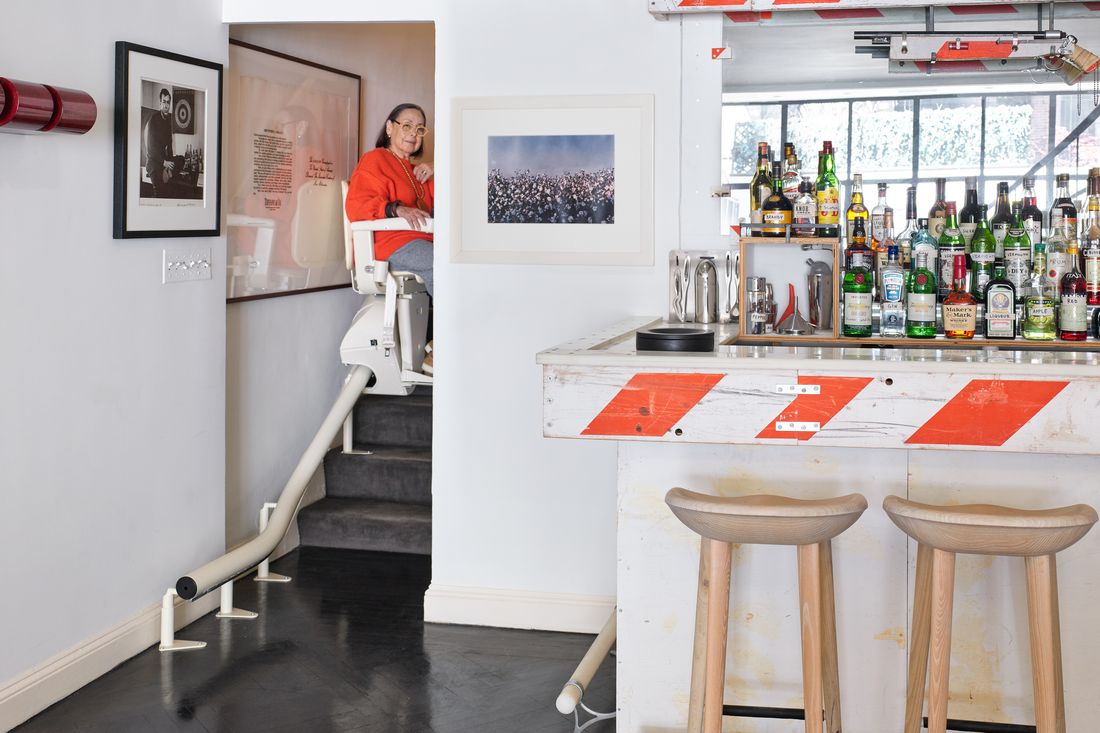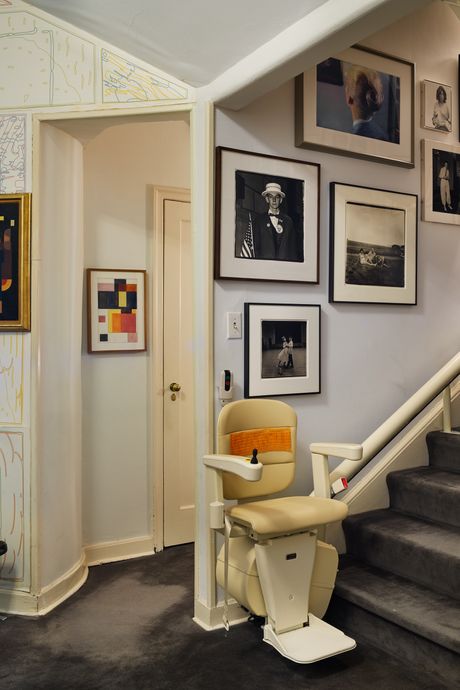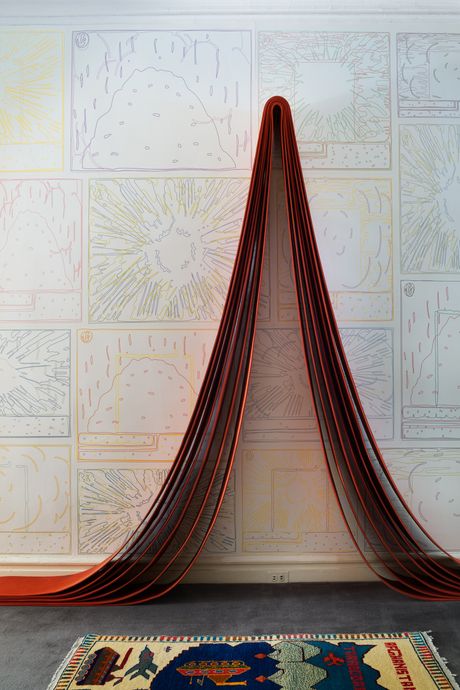
This house has a great history,” says Barbara Jakobson, much of which she made herself. She is 88 and has lived here since 1965, filling all five stories with her collection of paintings, sculpture, photography, and furniture. And the last thing she wanted to do was leave it. But a townhouse means a vertical life, and “after 56 years of stair-climbing without major incident, I was hurrying down from the top floor to the one below at about 5:30 p.m. on Friday, October 23, tripped, and as I crashed to the landing below, I cursed my fate,” she says. Her tumble broke her leg, but, she says gleefully, “I did not hit my head!”
She immediately realized she needed to find a way to move between floors more safely. Probably one of those stairlifts, if she could find one she liked. The house could be adapted; it had always changed with her life as her collecting evolved. “I see the house as a vessel for an ongoing autobiographical exercise,” she says. “I keep the transformation as proof of life.”
Ground Floor
She remembers first touring the Upper East Side house on a January day with her former husband, the late financier John Jakobson, walking into the ground-floor garden room (now home to her Tom Sachs–designed bar) where “there was nothing but a Bechstein piano and a Turner on the wall; that clinched the deal.” (There was also a lion’s-head fountain, but that she removed.)
They raised three children there. Barbara, who grew up across the street from the Brooklyn Museum and spent many hours in its galleries, had studied art and architectural history at Smith and, as an adult, began collecting art and got to know influential dealers, including Sidney Janis, Ileana Sonnabend, and Leo Castelli. She also had an interest in architecture, encouraged by MoMA curator Emilio Ambasz, and after becoming head of the Junior Council at the Museum of Modern Art in 1971, she organized a show of architectural drawings that included works by Peter Eisenman, Raimund Abraham, and Gaetano Pesce and became a trustee of MoMA in 1974.
Her many friendships are visible in these rooms: She and Robert Mapplethorpe were close, and she sat for many portraits by him. The Robert Morris felt piece in the foyer she bought in 1970; “Bob was a great pal. I really knew him until the end of his life.” She helped Sachs get his first job out of college, working with her when she was consulting for Knoll, doing the plywood furniture with Frank Gehry, “which I got Frank to do.”
Parlor Floor


German architectural historian Christian Borngräber’s book Stilnovo ignited her obsession with the furniture of Carlo Mollino. On a trip to Italy, she met Lisa Ponti, daughter of Gio Ponti. “When she learned that I loved Mollino’s work, she said, ‘Oh, he made me a wedding present,’ ” she recalls. Ponti offered to sell her some of it; Jakobson paid $12,000 for three Mollino side chairs and one armchair. Later, she traded one with David Salle for a painting and gave one to the late Mark Isaacson of the design gallery Fifty/50, “who was a great part of my assembling the period.”
Over the decades, Jakobson’s townhouse has gone through many iterations depending on what books fire her imagination and design ideas she has picked up on her travels.
Her decorative-arts library is full of Gio Ponti furniture and inspired, Jakobson says, by a book on Paul Frankl. “I ripped off that book mercilessly,” she says. “The idea of the grass cloth on the wall of the office and the idea for the raked plaster in the dressing room — all of that I got right out of a book.” The adjacent hallway is devoted to a collection of photographs of people smoking. For her dressing room, “I wanted a room that reminded me of the smoking lounge on the Queen Mary,” Jakobson says, and there she hung a photo of just that.
Third Floor
Her bedroom, on the fifth floor, is a luxurious cocoon with a bookcase designed by Ambasz that conceals her books. Hanging on the wall is a giant photograph of Mollino’s bedroom in Turin, which she saw at dealer Fulvio Ferrari’s booth at the Armory Show. “I said, ‘Oh my God, I want it.’ ”
She off-loaded a trove of art and design that she’d been collecting since the ’50s in a sale in 2005. Gini Alhadeff interviewed her for the Christie’s catalogue, where she said, “The furniture and the art are two different stories because the art, with few exceptions, was bought within a year of its making. And that still holds true of the art I buy now. Collecting furniture of the ’40s and ’50s — that was more of a retrospective look at my own life.”
And she is still collecting. “You know, after I sold some of that furniture at auction, I decided that I wasn’t going to buy anymore furniture except designed by artists,” she says. The garden room — where the previous owners had the piano and the Turner — still bears the shadow of Frank Stella’s Felsztyn III (1971), outlined from when it hung there.
While recuperating from her fall, she looked into the right chairlift, one that might keep her in her house. She has always been fascinated by chairs. The first research paper she ever did, at age 13, was on the history of the chair. Why the chair? “Well, you know, the chair is the substitute for the human body. The chair is the only piece of furniture that relates to a single human being. So from the time you get in your high chair to the time you get in your wheelchair” — here, she laughs — “you’re dealing with chairs. And that’s why, I mean, in a way, that’s why the stair-climber, when I found it, I realized, Oh my God, it’s a chair; it’s going to save my life.”












